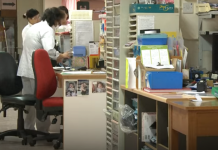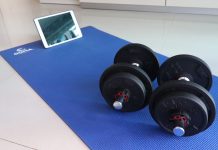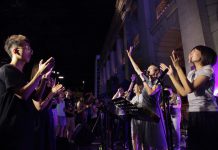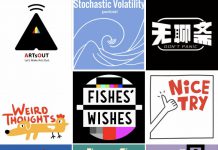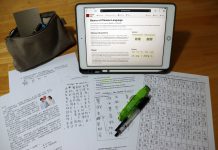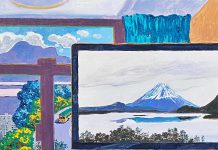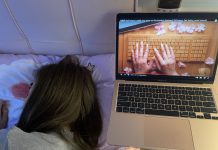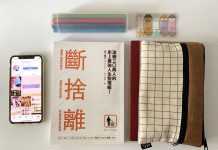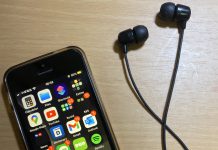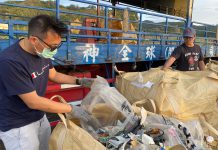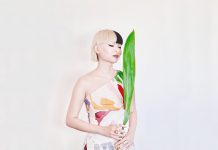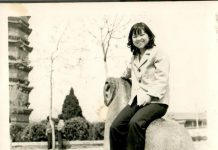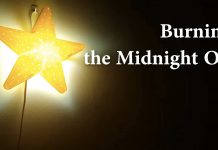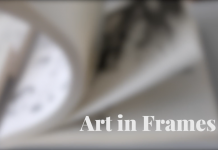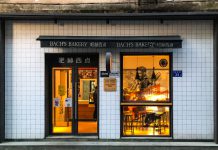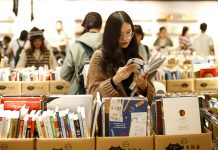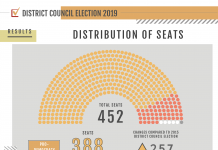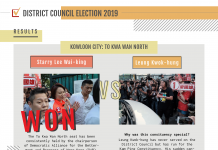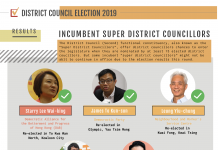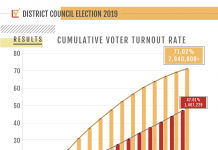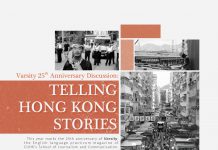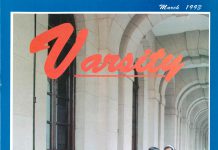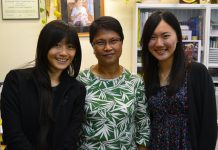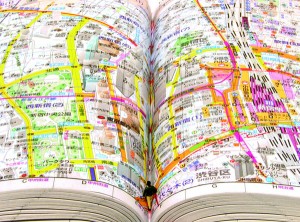Reporter: Samuel Chan Che-chung
Pak Sheung-chuen does not read the way most people do. What first catches the artist’s attention is not the title or the text of the material, but the positioning of the punctuation marks and the white border round the page.
This unique reading habit may be a window to explaining some of the outlandish aspects of Pak’s artworks. Most people may find it hard to read the information printed in the middle of an opened map book, between two pages. But Pak found inspiration in these spaces, and decided to make a journey through them. He walked 24 pages in total, from the south of Tokyo to the northern end of the city, documenting his trip along the way in 2007.
This alternative journey project, titled “Valleys Trip” (named for the gap in between the pages which resemble a valley), was one of Pak’s works exhibited last year at the prestigious Venice Biennale, an international contemporary art exposition held in Venice every two years.
For many Hong Kong artists, the chance to be the city’s sole representative at the world’s most important visual art event might be the dream of a lifetime. This was not the case for the 33-year-old Pak.
“My works draw inspiration from daily life in a natural manner, , while Venice is like a stage. ’’ he explains. “You have to make yourself stand out in certain ways to impress the audience. This kind of contradicts to the way I work.”
Pak was also ill-suited to dealing with the media circus surrounding the biennale. Besides having to deal with the pressure of representing Hong Kong, he was also stressed by having to handle things he had no experience in, such as public relations and media criticism.
“I have never experienced such pressure before as an artist,” he says.
Contrary to the popular stereotype of the suffering and starving artist, Pak has not faced too many hardships in his career. In fact, he considers himself the luckiest artist in Hong Kong. Pak graduated from the Department of Fine Arts at the Chinese University Fine Arts in 2002. The pressure to find work was put on hold by the outbreak of SARS soon after.
In any case, he was given a visual arts column in the Sunday supplement of the Ming Pao newspaper. Pak says the column is a platform to do what he really wants to do, which is to tell ordinary people about the beauty in everyday life. In it, Pak presents his conceptual art on the printed page, with a few lines explaining what he is doing and why.
His refreshing take on the ordinary things in everyday life could be what has attracted so many people to his work – Pak’s column drew a lot of attention right from the beginning.
“I twist a little bit of what I see in life and take one more step to give new meanings to the ordinary,” he says.
Pak further explains that there are usually two approaches artists use to deal with the relationship between art and life, “Some [artists] try to incorporate life as one of the elements in their artworks, which will prompt the audience to associate it with life. But in fact there’s actually no relationship between the two.”
“Others try to incorporate the elements of art into daily life. What they present are not artworks, but simply a desire they have to make life better,” he says.
Pak adds, “I consider myself as belonging to the latter group.’’
The eagerness to make his own life better may explain why Pak’s works are very personal in nature. In his latest “Go Home Project” which took place at the Taipei Fine Arts Museum during the Taipei Biennial 2010, Pak would wait everyday next to a vertical banner that read, “Let the artist accompany you home!’’ He would then share a special journey with a visitor who responded to the invitation.
Apart from challenging the conventional distinction between the artist and audience by exchanging roles, Pak says the project also stressed the importance of mutual trust. In retrospect, he realised this was an expression of his own sense of a lack of security.
On the first night he moved into his current home in a village in the Sai Kung district last year, his home was broken into and all of his valuables were stolen. “Before that, there was no such thing as a thief in my world,’’ Pak says. “Ever since then, I don’t feel secure at home and have become more alert to any possible danger.”
Pak views the “Go Home Project” as part of a process of recovery, which helped him to rebuild his trust in others and heal the psychological harm that was done. He also describes his creative works as being driven by a visceral force.
“My body helps me to search for what I really need. Sometimes these may even be things that I am not aware of myself,” he explains. “It is not necessarily the brain that leads me along the creation process, it is the body which often reacts faster when something goes wrong inside. It will help you to recover your equilibrium.’’
Pak says he has gone through years of persistent training in order to build up his sensitivity to his body’s reactions and to the environment.
He recalls forcing himself to walk on the streets every day during the time he was working for Ming Pao, as a way to train his senses. “After walking slowly for a while, I am able to feel a certain level of tiredness in my body. That is when my breath, heartbeat and mind are in a state of perfect coordination… And then, ‘Ding!”, interesting ideas will pop into your head by themselves.’’
Pak gives an example of such an idea. He once dialled a number using the numbers of bus routes at a bus stop near his home. He talked to the person on the other end for quite a while.
” I believe that 10 out of 10 people you interview would not do such a crazy thing,” Pak says, laughing. “But it is because of the sensitivity I have to the things around me that opens up different doors of possibilities for me to try things out.”
Wondering how long it would take to consume all the air in the apartment that he rented while he was in Korea for the Busan Biennale in 2006, Pak decided to collect all of his breath in transparent plastic bags every day until, by the 10th day, they filled up the entire apartment.
While most people cannot tolerate doing repetitive work for an unbearably long time, Pak has a different take on boredom. He attributes this to spending time at church when he was growing up. There, he developed the habit of praying and reading a Bible passage for two hours. At first, he found it difficult to sit through a sermon and listen to the pastor’s repeated elaboration of the meaning behind a single Bible verse.
“But once you have gone through the whole boring process, you’ll discover something very valuable, “he says. “And when you try chew on it and apply what you get out of it to daily life, the whole situation becomes more vivid and means much more.”
Pak takes pride in the fact that his artwork contains different levels of meaning and that the audience can often participate in the creative process as well.
He cites the example of a newspaper project he did in 2004, in which he wrote the English word “Win” and drew a church by marking 24 numbers on each of two Mark Six lottery tickets.
“On the first level, readers participate by noticing my work and finding it interesting. Some of them may then follow suit and buy a similar ticket. By doing so, they have furthered their engagement in the process,” he says. “I regard them as having already ‘won’ the moment they bought the “Win” ticket as it will leave a lasting impression in their minds.”
Pak says the audience reaches the third level of participation when they start to think about what else can be drawn on a Mark Six ticket because, “they will begin to see the world around them from other perspectives which will make their lives more fulfilling.’’
Pak prefers to see himself an art demonstrator rather than as some eminent artist. “This is because I believe that everyone has the capacity to do creative work,” he says. “It’s just that I have more time than the others to do it, or I am willing to put time into it.’’
Editor: Grace Wong





